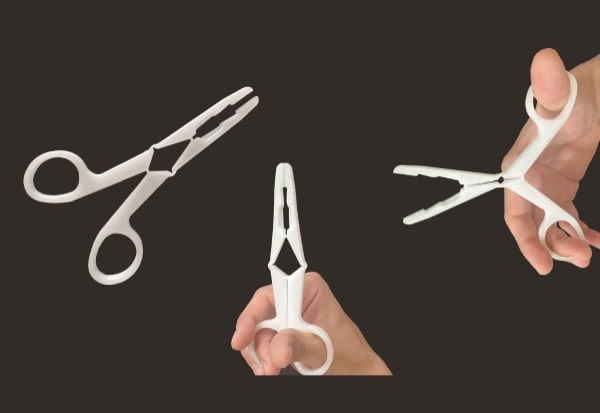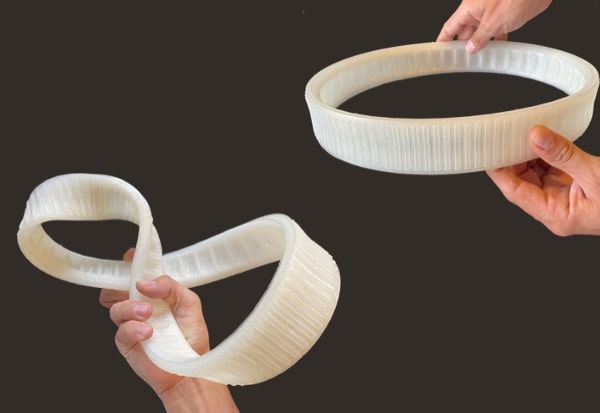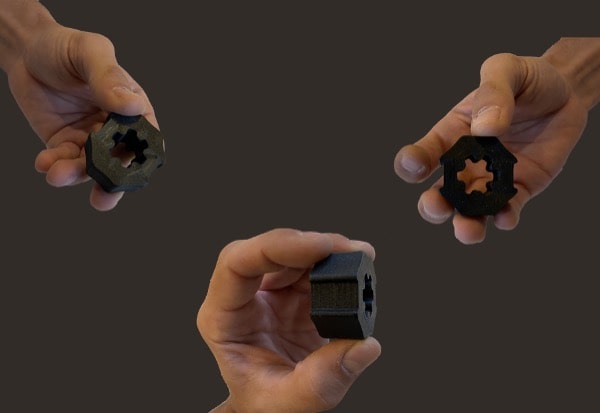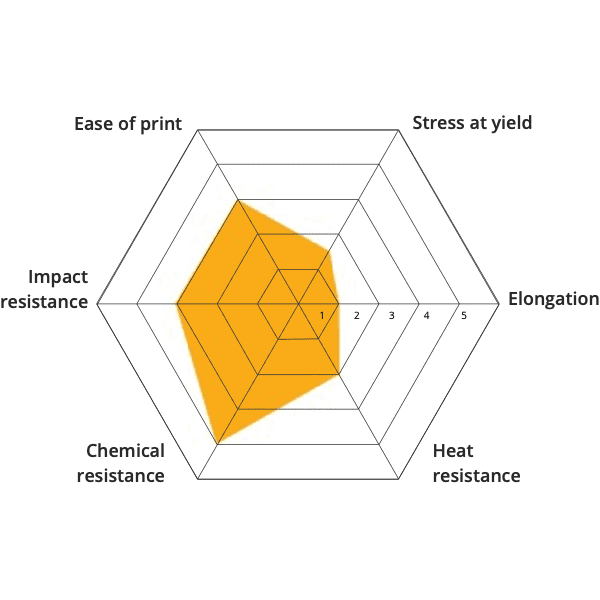
PE - Polyethylene
Polyethylene is a semi-crystalline thermoplastic. Classified by its density and branching, PE properties depend on their molecular weight and structure. Ductile and impact resistant, it feels waxy when touched.
Chemically stable it is a commodity thermoplastic widely used in packaging and film extrusion.
Main 3D printing parameters
| Advised nozzles | Brass 0.25 | 0.4 | 0.6 | 0.8 | 1.0 | 1.2 mm |
| Printing temperatures | 200 - 265°C |
| Buildplate substrate | PP film | Adhesive helper |
| Builplate temperature | 50 - 80°C |
Let’s dive into the possibilities offered by PAM
From pellets to object, PAM technology offers the most direct process to high performances end-parts.
Metals Ceramics Commodity Elastomers Performance High Performance.











